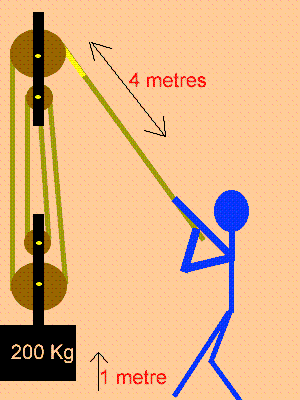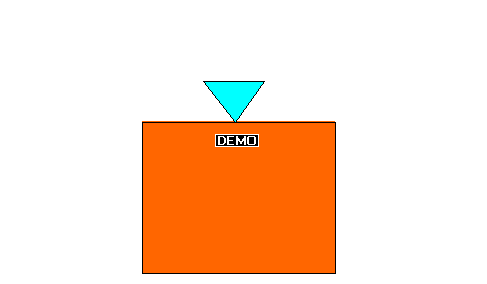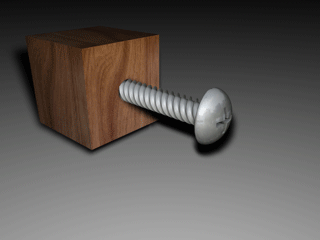A simple machine is best described as any of the basic mechanical devices for applying a force, such as an inclined plane, wedge, or lever. Simple Machines are used in our everyday lives. For instance, a ladder or flag pole could be considered a simple machine.
Types of Simple Machines:
Lever: a rigid bar resting on a pivot, used to help move a heavy or
firmly fixed load with one end when pressure is applied to the other. Some examples of levers are crowbars, bottle openers, and seesaws.

Wedge: a piece of wood, metal, or some other material having one thick
end and tapering to a thin edge, that is driven between two objects or
parts of an object to secure or separate them. Some examples of wedges in our everyday lives are wood axes, door stops, and knives.
 Inclined Plane: An inclined plane is quite self-explanatory. It's a plane inclined at an angle to the horizontal. Examples of inclined planes are limited since most people refer to them as ramps, and there aren't really any variations of a ramp.
Inclined Plane: An inclined plane is quite self-explanatory. It's a plane inclined at an angle to the horizontal. Examples of inclined planes are limited since most people refer to them as ramps, and there aren't really any variations of a ramp.  Pulley: a wheel with a grooved rim around which a cord passes primarily used to lift heavy objects. Pulleys can be found on flag poles, on theater stages, and in construction.
Pulley: a wheel with a grooved rim around which a cord passes primarily used to lift heavy objects. Pulleys can be found on flag poles, on theater stages, and in construction.
Screw: a short, slender, sharp-pointed metal pin with a raised helical
thread running around it and a slotted head, used to join things
together by being rotated so that it pierces wood or other material and
is held tightly in place. Screws are most frequently used in construction.
Wheel and Axle: a simple lifting machine consisting of a rope that unwinds from a
wheel onto a cylindrical drum or shaft joined to the wheel to provide
mechanical advantage. A Ferris wheel and vehicular wheels are considered wheel and axle simple machines because the both are wheels with an axle.
The majority of simple machines can be determined through common sense.
The History of Simple Machines:
The idea of a simple machine originated back around 200 B.C from ancient Greek philosopher Archimedes. It was Archimedes himself who had developed the theory of Mechanical Advantage in the lever. He also had the idea of the screw and pulley.
Next came many more minor progressions after Archimedes death, until Heron of Alexandria came along. He listed in his works Mechanics the five different simple machines that make tasks easier; lever, windlass, pulley, wedge, and screw. However early mechanics didn't have a full grasp on the concepts of simple machines, as they hadn't yet discovered dynamics; tradeoff between force and distance.
During the Renaissance, mechanics experimented to see how far they could lift a certain amount of weight, with a certain amount of force, eventually revealing a concept known as mechanical work.
The inclined plane was only considered a simple machine when Flemish engineer Simon Stevin proved its Mechanical Advantage in 1586.
The dynamic theory was studied and introduced by Italian scientist Galileo Galilei in 1600 in his works.




No comments:
Post a Comment